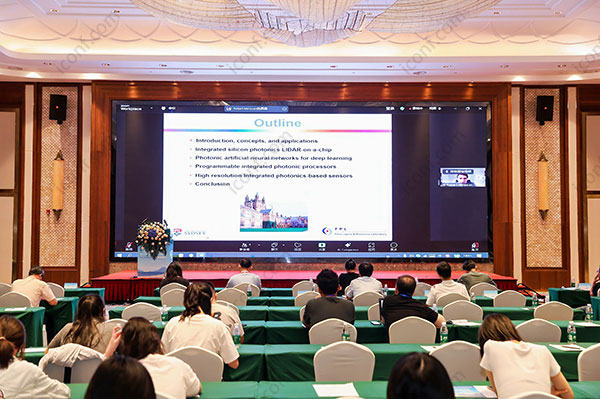

152 views||Release time: Aug 06, 2025
Presenting at your first academic conference can feel both thrilling and nerve-wracking — especially when it comes to preparing your PowerPoint slides. A well-structured, visually clear presentation can make a strong impression, while a cluttered or confusing one can undermine even the best research.
Whether you’re giving a short talk at a forum or a full-length oral presentation, here’s what you need to know to design an effective academic PPT.

An academic presentation PPT should follow a logical flow:
Title Slide – Include your name, institution, and presentation title.
Introduction – Define the research problem and why it matters.
Methodology – Explain how you approached the problem.
Results – Use visuals to highlight key findings.
Discussion/Conclusion – Interpret results and explain their relevance.
Acknowledgments & Q&A Slide – End with appreciation and a question prompt.
Keep the number of slides manageable. For a 10-minute talk, aim for 8–10 slides.
Don’t overload slides with text. Stick to bullet points or short phrases — your spoken words should add the detail. Use fonts like Arial or Calibri, minimum size 24pt, with high-contrast colors (e.g., dark text on a light background).
Avoid flashy transitions or animations unless they serve a clear purpose. Clean visuals always trump visual noise.
Academic audiences appreciate data, but only when it's clear. Use:
Graphs to show trends
Tables for concise comparisons
Diagrams to explain processes
Label all visuals clearly and don’t overcrowd them. If a chart looks complex, explain it slowly and use a pointer to walk the audience through.
Remember that not everyone in the room may be from your exact research niche. Simplify technical jargon where possible, and explain key terms or abbreviations early on. Balance precision with accessibility — this is key to being understood.
Once your slides are ready, rehearse your talk multiple times. Practice helps you refine your timing, identify awkward transitions, and gain confidence. Use presenter mode so you can view your notes without reading from the screen.
Try presenting to a colleague or in a mock session to get feedback.
Always bring your slides in multiple formats (PPT and PDF) on a USB drive, and email yourself a copy as a backup. If your talk includes video or audio, test it on the venue’s equipment in advance if possible.
Your last slide is a chance to leave an impression. Include:
A summary of your key message
Your name and contact information
A simple “Thank you” and “Questions?” note
This invites interaction and helps attendees remember you after the session.
Public speaking may be nerve-racking the first time, but with the right preparation, your academic presentation can be both impactful and memorable. For more guidance on upcoming forums and how to navigate your academic journey, explore high-quality opportunities at iconf.com — a trusted platform for scholars worldwide.
Speak clearly, stay calm, and let your research shine.